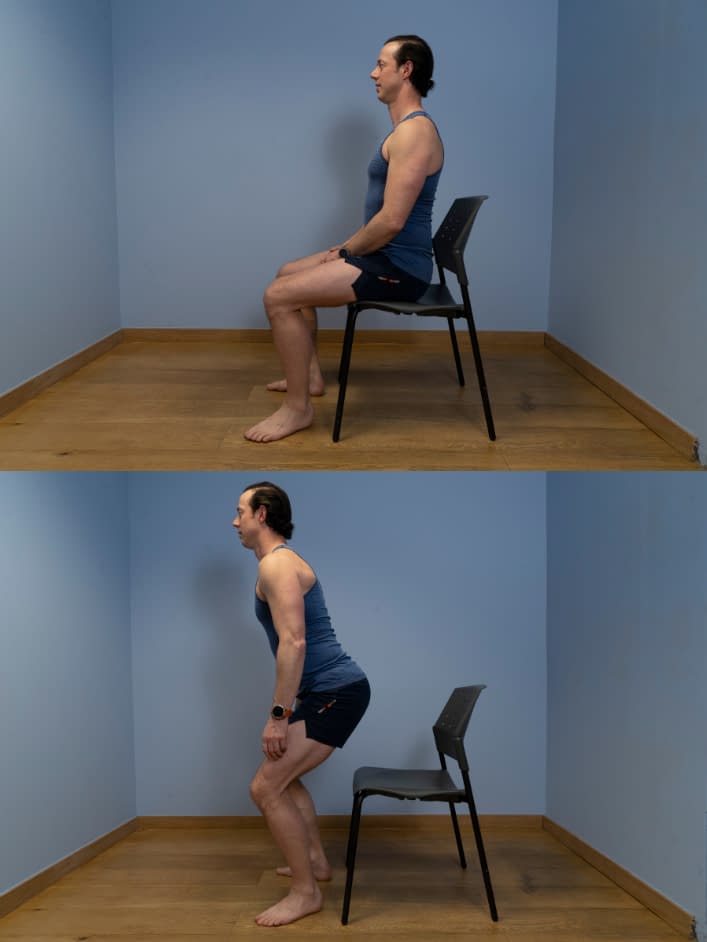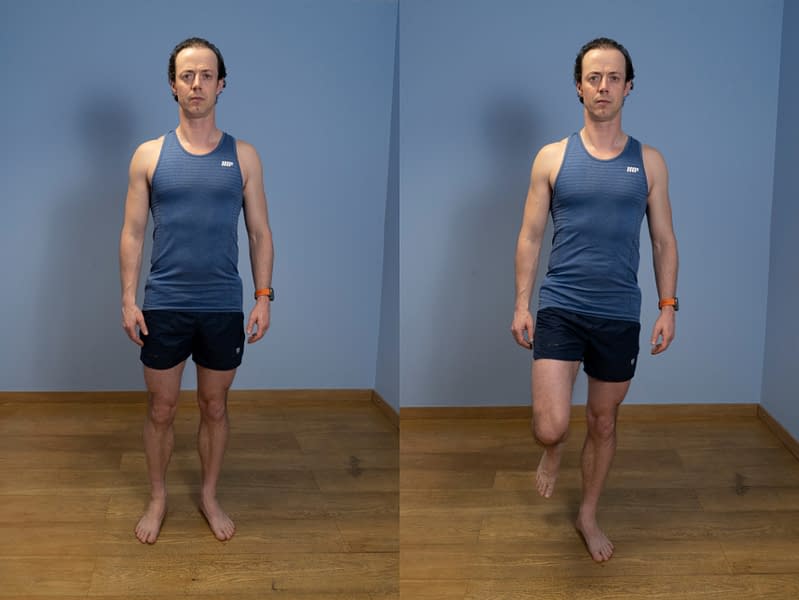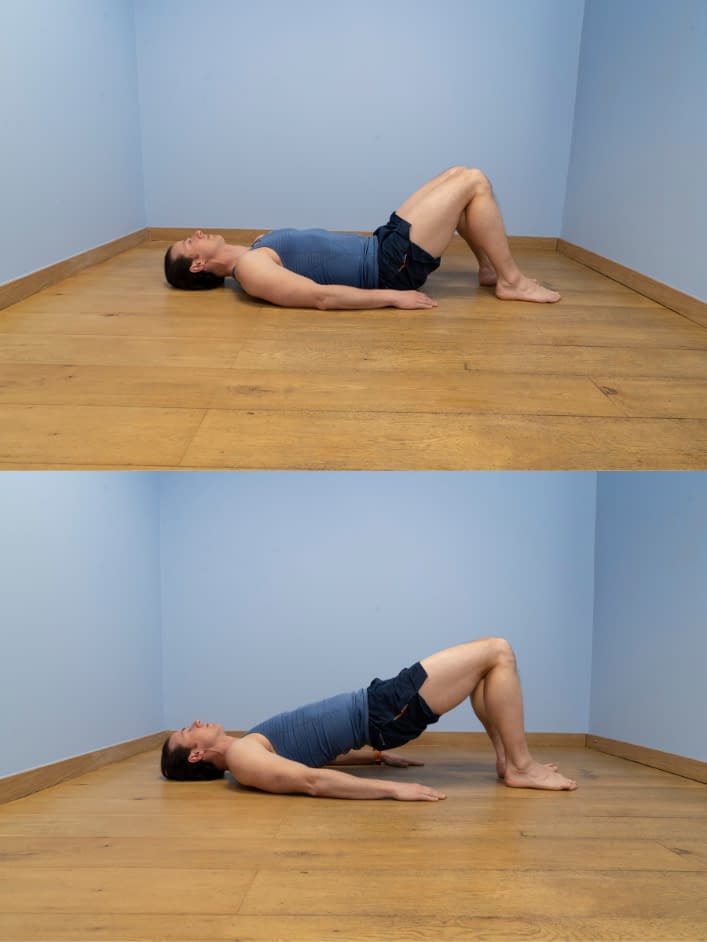Meniscus Injury Intermediate Exercise Programme
Aim to perform this programme a minimum of once per day unless prescribed otherwise. As with any new exercise, start slowly (repetitions as able) and build up as you are able within the guidelines below.
Pain should not exceed 4/10 whilst completing this exercise programme.
1. Sit to stand
- Sit in a stable chair that is at a convenient height for you to rise from.
- Shuffle forward in the chair so that your feet are directly under your knees.
- In a controlled manner, initiate a standing motion by shifting your weight forward and pushing down through your feet.
- As you rise, transition to standing upright by pushing your hips forward.
- Then, slowly lower yourself back down towards the chair by pushing your hips backwards and controlling the movement using your thigh muscles.
- Gently touch your buttocks on the chair before repeating.
2. Single leg balance
- Perform this exercise barefoot or in socks, in a clear space near a wall/stable object and on a flat, non-slip surface.
- Shift your weight on to the affected leg then lift the supporting leg slightly off the floor – maintain a slight bend in the standing knee.
- Look down at the knee and focus on balancing whilst keeping the knee in line with the hip and ankle – use the object/wall to prevent yourself falling.
- To progress, try looking straight ahead rather than down at the knee. To advance further, this can be performed with the eyes closed.
3. Hip bridge
- Lie on your back on the floor or bed with your knees bent at 90 degrees and your feet on the floor and your arms down by your side.
- Push your heels down into the floor to gently lift your hips upwards. Lift as high as you feel comfortable but no higher than a straight line between hips, knees and shoulders.
- Hold at the top for 5 seconds.
- Push up as far as you feel comfortable, and pain and stiffness allow.
We recommend consulting a musculoskeletal physiotherapist to ensure exercises are best suited to your recovery. If you are carrying out an exercise regime without consulting a healthcare professional, you do so at your own risk. If you have any concerns whilst completing these exercises, please contact a healthcare professional.
More Plans
At this stage, exercises are focused on reducing stiffness often associated with the condition and helping to promote movement and blood flow that can, in turn, reduce any swelling that has occurred. Pain should not exceed 3/10 on your self-perceived pain scale whilst completing this exercise programme.
- 0
- 1
- 2
- 3
- 4
- 5
- 6
- 7
- 8
- 910
This programme provides a progression of hip and knee strength exercises including a move towards more functional positions ensuring a return to normal day-to-day activities. Pain should not exceed 2/10 on your self-perceived pain scale whilst completing this exercise programme.
- 0
- 1
- 2
- 3
- 4
- 5
- 6
- 7
- 8
- 910


